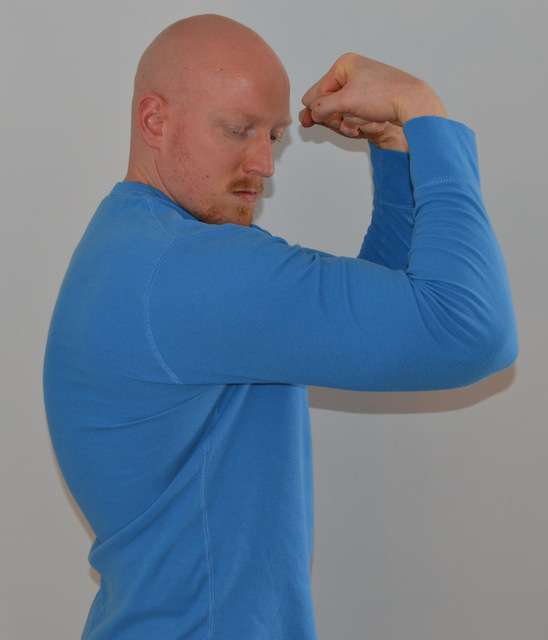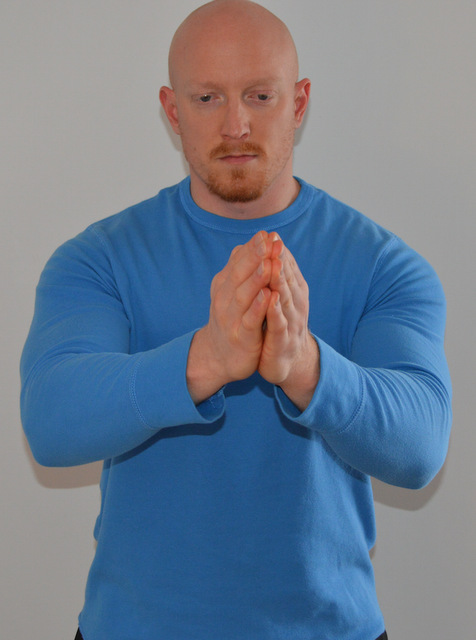Hey fellas, the following is a guest post by my friend, Todd. He’s going to give us some info on a completely different method of training, something that you won’t hear coming from me, so it’s great to have another perspective on the site. Make sure you read the whole article and discover how isometric exercises can actually make you stronger.
The late Jack Lalanne used to say that in order to keep getting stronger, you have to change up your workout routine every 30 days. The muscles of the human body are designed to adapt. When you start a new workout routine oftentimes you’ll feel sore the next day.
Why?
Its because your body is not used to the exercise. Your muscles were challenged in new ways that forced the muscle tissue to tear. This is the key to getting stronger.
The problem is that people are resistant to change. We don’t like to change things up. Its hard to integrate new styles of fitness into our current routine even though we need them.
Where do you start? What do you take out and what do you put in?
In this article, I’m going to teach you an old school method of building strength. This method can easily be integrated into your current routine. It will also help you avoid the dreaded plateau and help you get stronger and leaner.
The method is called isometric exercises or isometrics.
Its a method of contracting a muscle or muscle group without having the joint actually move.
There are 3 types of isometrics that I’d like to share with you. I’ll tell you about each and then teach you how you can incorporate them into your daily routine.
3 Ways You Can Use Isometric Exercises To Get Stronger
1. Static Tension Isometrics
Static Tension is a type of isometric where you contract a muscle in space. Think of how a bodybuilder poses during a competition. They stand on stage and contract their muscles in order to show the judges and audience their physique.
 Try this for a moment. Lift your arms up so that your elbows are in a 90 degree angle. Contract your biceps as hard as you can. Hold it. Go ahead, keep holding it. Think about tightening your biceps as much as possible.
Try this for a moment. Lift your arms up so that your elbows are in a 90 degree angle. Contract your biceps as hard as you can. Hold it. Go ahead, keep holding it. Think about tightening your biceps as much as possible.
Great! That’s Static Tension.
You can use this technique for every muscle in your body.
I often do this technique while waiting in line at the grocery store. While standing, I start contracting my legs, abs, back and arms. You can get a great “grocery store” workout without anyone even noticing!
How To Use This In Your Routine:
One way that you can immediately start applying Static Tension in your current routine is to use it as a “finisher”. Lets take the biceps for example.
Start off by doing your normal bicep curls with weights until you can’t do them any more. Put down the weights and immediately contract your biceps as hard as you can.
Hold it for 30 seconds. The extra tension that you are applying in your arms will tear more muscle tissue than by doing the weights alone.
2. Yielding Isometrics
Another type of isometric is called Yielding Isometrics. Yielding Isometrics are when you push against a movable force but don’t let the joint move.
An example of this is Palm Pushes. Go ahead and try it.
Put your hands into a prayer position about 12 inches away from your body. Now press your hands together as hard as you can. Come on. You can push harder. Push with all of your might.
Do you feel your chest muscles engage? Hold it for 30 seconds and you’ll definitely feel it.
You can see that your chest and arms muscles tightened up tremendously but didn’t actually move your arms. You had an opposing force resisting it so it couldn’t move yet you were still exercising.
How To Use This In Your Routine:
There are a few ways of incorporating Yielding Isometrics into your current routine. The first way is to use it as a “finisher” exercise immediately after a set (as suggested with Static Tension Isometrics).
However, I find it also effective to use it as method of “pre-fatigue”.
Let’s take the chest as an example again. Say you are about to do the bench press. Before jumping straight into the exercise do 30 seconds of Palm Pushes. You’ll be pre-fatiguing the chest muscle and force it to engage more muscle fibers than it ordinarily would.
3. Overcoming Isometrics
The last type of isometric is called Overcoming Isometrics. This may easily be called the “Ultimate Isometric” because you are pushing against an immovable force.
The best way to describe this is by describing an exercise called Wall Pushes. It is an intense exercise that works the shoulders but also engages the triceps, chest, back and legs.
Here’s how to do Wall Pushes. Stand about 2-3 feet away from a wall. Get in a low lunge position and place your hands on the wall at about chest level. Now push against the wall with all of your strength. Go ahead, push harder. Try to knock the wall down by pushing so hard.
Do you feel the amount of contraction in your muscles? Its crazy intense and you technically aren’t even moving.
How To Use This In Your Routine:
Honestly, you could develop an entire routine out of Overcoming Isometrics. However, I like to couple this exercise with Static Contraction Isometrics. Static Contraction Isometrics help to pre fatigue a particular muscle. After you are done holding it for a certain period of time you go straight into an Overcoming Isometric, like Wall Pushes.
Its totally brutal and will help develop tremendous strength.
By incorporating Static Contraction, Yielding and Overcoming Isometrics into your current routine you can elevate your workouts to a whole new level. Your body will be challenged in new ways and be forced to develop more strength.
You can use isometric exercises as a stand alone routine or in conjunction with weights or bodyweight exercises.
If you’re interested in checking out a full isometric workout plan already developed for you, see my 8 Week Isometric Strength Plan. It will help you build muscle, lose fat and get stronger. It only requires you to do one workout 3-4 times per week and is very intense.
